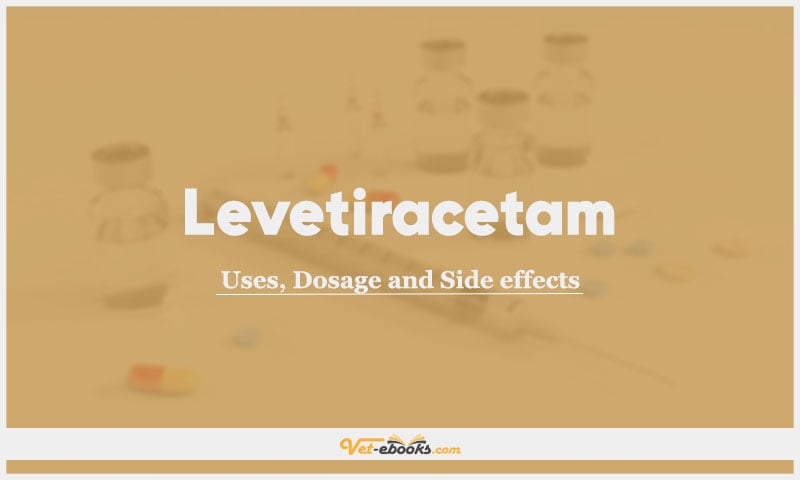Levetiracetam (S-Etiracetam) In Dogs & Cats: Uses, Dosage and Side Effects

Overview
- The mechanism of anticonvulsant action is unknown but it has been shown to bind to the pre-synaptic vesicle protein SV2A within the brain, modulating the release of neurotransmitters, which may protect against seizures.
Uses of Levetiracetam (S-Etiracetam)
- As an adjunctive maintenance therapy in dogs and cats for the management of epileptic seizures refractory to conventional therapy.
- Also as a primary therapy where phenobarbital is contraindicated; however, efficacy is significantly worse than phenobarbital in newly diagnosed epileptic dogs.
- Used at a higher dose, in addition to conventional maintenance therapy, as pulse therapy for cluster seizures.
- A constant intravenous infusion can be used for emergency control of status epilepticus.
Dose of Levetiracetam (S-Etiracetam) in Dogs and Cats
Dogs, Cats:
- Maintenance therapy (as adjunct or sole anticonvulsant): 20–30 mg/kg p.o. q8–12h.
- Pulse therapy for severe cluster seizures (in addition to maintenance therapy): 30 mg/kg p.o. q6–8h for the duration of the cluster (usually for 2–3 days) and then incrementally reduced and stopped until the start of the next cluster.
- Status epilepticus: 60 mg/kg i.v. bolus q8h or continuous intravenous infusion of 8 mg/kg/h, incrementally increased to effect if required.
- The parenteral preparation can be given at 40 mg/kg per rectum if oral or i.v. administration is not possible.
Drug Dosage Calculator
You Should Give:
Side Effects of Levetiracetam (S-Etiracetam) in Dogs and Cats
- Sedation and ataxia in dogs.
- Reduced appetite, hypersalivation and lethargy in cats.
Contraindications of Levetiracetam (S-Etiracetam) in Dogs and Cats
- Severe renal disease.
Some Notes:
- There is some evidence to suggest that phenobarbital increases levetiracetam clearance, reducing the half-life and peak levels.
- Levetiracetam is rapidly absorbed from the GI tract with peak plasma concentrations reached in <2 hours of oral dosing.
- Steady-state is rapidly achieved within 2 days.
- Plasma protein binding is minimal.
- The plasma half-life is around 3–4 hours in dogs.
- It will also reach target serum concentrations if administered rectally.
- Withdrawal of levetiracetam therapy or transition to or from another type of antiepileptic therapy should be done gradually.
- Use with caution and in reduced doses in patients with renal impairment; in humans, renal elimination of levetiracetam correlates with creatinine clearance.
Tip
Do You Want To Increase Your Veterinary Knowledge and Practical Skills?
You Can Now Browse and Download +3000 Books For Veterinary Professionals & Students Online.
Download Veterinary Books




















